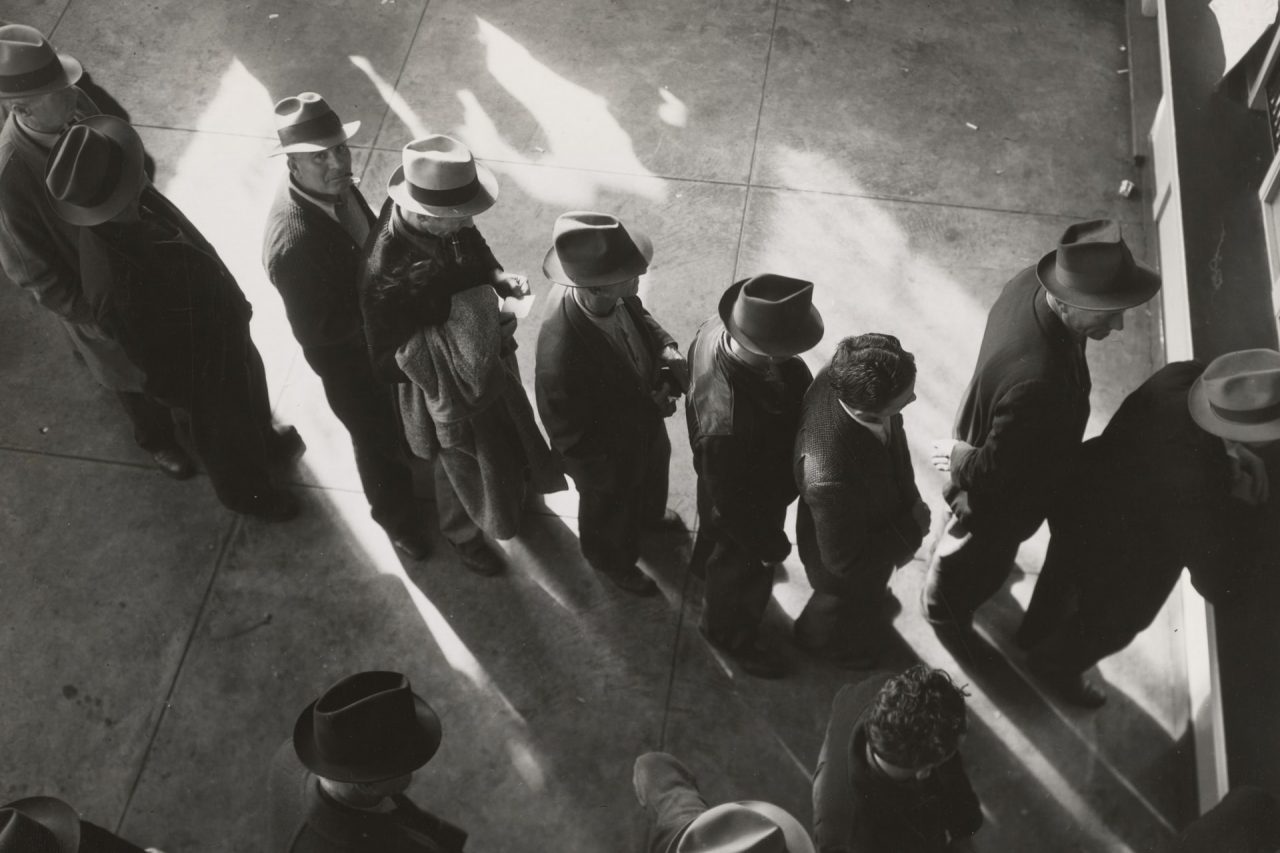Unemployment statistics is officially defined as the percentage of the labour force that is currently without a job. It can be calculated by dividing the number of unemployed individuals by the number of people in the labour force and multiplying the result by 100.
Unemployment consistent with this definition has been recorded since 1971. The highest recorded unemployment rate was 11.9% in 1984, and the lowest was 3.4% in 1973. Data is not available before 1971, as the Labour Force Survey was not active before this year.
If you want to know the latest statistics and how they have changed over the years, read on.
UK Unemployment Rate Facts and Stats — Editor’s Pick
- In September 2019, unemployment in the UK was 3.8%.
- Those aged 16 to 24 have the most difficulty landing a job.
- Women are responsible for the annual employment increase.
- 3.6% of White people were unemployed in Q1 of 2020.
- In November 2020, unemployment was highest among Black individuals.
- Only 4% of White individuals are unemployed.
United Kingdom Unemployment Rate
1. Unemployment in the UK fell to 3.8% in September 2019.
(Office for National Statistics)
Unemployment in the United Kingdom fell to 3.8% from July to September 2019, which was 0.2 points less than in 2018 and 0.1 points less than in the previous quarter. This is the lowest unemployment rate in over 45 years.
2. Between July and September 2019, unemployment in the UK reached 1.31 million people.
(Office for National Statistics)
If you take a look at the UK unemployment figures, you will see that 1.31 million people were unemployed between July and September. This is 72,000 fewer than a year before. It’s also 656,000 fewer than in 2014. The number of unemployed in the UK has been steadily decreasing in recent years, and various statistics show that positive changes are happening across the country.
3. 14.5% of 16–24-year-olds were unemployed in October 2020.
(Statista)
According to current employment statistics, 16-24-year-olds are least likely of all age groups to be employed.
When it comes to youth unemployment statistics, the UK had a rate of 14,5% in October 2020, the highest of all age groups. Unemployment in this demographic has consistently been the highest since 1992.
4. In September 2019, 32.75 million people older than 16 were employed.
(Office for National Statistics)
According to the estimated unemployment rate in the UK for 2019, 32.75 million people older than 16 were employed from July to September. This is 323,000 more than in 2018.
5. Women were responsible for the annual employment increase in 2019.
(Office for National Statistics)
The annual employment increase in 2019 was mostly driven by women — up to 226,000. However, quarterly decrease in employment was also driven by women — 93,000 but was partly offset by a 106,000 increase in full-time workers.
6. UK unemployment statistics show that a total of 8.62 million individuals aged 16–64 were not employed in 2019.
(Office for National Statistics)
From July to September 2019, 7.62 million 16-64-year-olds weren’t employed. The figure was 110,000 lower than a year before and 411,000 lower than five years before.
7. The rate of unemployment in London is 14.9% for 16–24 year-olds.
(Trust for London)
Statistics show that unemployment in London is much higher for those aged between 16 and 24 than for older adults in the capital. Moreover, the same applies to the rest of England, where the unemployment rate for this age group is 12%.
The number of unemployed young adults has fallen very quickly since 2013, and London has come down from a peak of 25.8%. Unemployment figures in the UK for young adults who live in London are higher than in the rest of England by 1.1%. That being said, the difference is not as big as it once was.

UK Unemployment Rate History
8. As of 2012, employment rates in the UK have been increasing.
(Office for National Statistics)
The employment rates for both men and women aged 16–64 have been increasing since 2012. They reached a record-high 76.1% in July 2019.
UK employment statistics also show that the employment rate for men was 80.2% during that period — the same as in the previous quarter. The estimated employment rate for women was 72.1%, which is 1.1% higher than in the previous year.
9. The UK unemployment rate in September 2019 was 3.8%.
(Teletrade)
From September to November 2019, employment in the UK reached a record high — 76.3%. It was 0.6% higher than in the previous year and 0.5% higher than in the previous quarter. On the other hand, the national unemployment rate was 3.8%.
10. In October 2020, unemployment hit an all-time high since 2016.
(Statista)
In October 2020, unemployment in the United Kingdom reached an all-time high of 4.9%. When looking at the unemployment levels in the UK for the past decade, this rate is the highest since July 2016.
This increase has been attributed to the COVID-19 pandemic that caused a lot of people to lose their jobs. The UK youth unemployment rate increased due to the fact that most of the younger age groups usually work in places or companies that were closed down due to health protocols.
11. The economic inactivity rate has been falling since 1971.
(Office for National Statistics)
According to UK statistics from 2019, unemployment figures were significantly lower than in 1971. The economic inactivity rate has also declined (the only exceptions are the periods of economic recession), which contributes to the percentage of unemployment in the UK.
12. The economic inactivity rate of women was 25.2% in 2019.
(Office for National Statistics)
This figure was recorded between May and July 2019, and it is lower by 0.8% compared to the previous year and lower by 0.1% compared to the previous quarter.
Historical UK unemployment stats show that the declining economic inactivity rate of women contributes largely to the combined rate of both genders.
13. In 2019, the economic inactivity rate of men was 16.4%.
(Office for National Statistics)
The UK unemployment data shows that it was 0.1% lower than in the previous year and the same as in the previous quarter.
14. The pay growth rate has been increasing since 2017.
(Office for National Statistics)
The pay growth rate reached 3.9% between May and July 2019, affecting unemployment levels. This is the highest nominal pay growth since 2008.
Moreover, when you look at July to September 2019 data, you will see that growth actually dropped to 3.6% for regular and total pay. In other words, annual pay growth has been positive since December 2017.
Unemployment Statistics by Race
15. 3.6% of White people in the UK were unemployed in Q1 of 2020.
(Statista)
In the first quarter, 3.6% of White Brits were unemployed, according to the 2020 UK unemployment rate. Moreover, unemployment for Bangladeshi in the UK was 9.3%, 9% for Black/African Caribbeans, and 6.2% for the Pakistani ethnic group.
16. In 2020, Black individuals in the UK had the highest unemployment rate among all racial groups.
(UK Parliament)
Figures show that, in November 2020, Black individuals had the highest unemployment compared to all other ethnic groups in the United Kingdom. Unemployment rates in the UK show an unemployment of 11.6% among Black individuals in the third quarter of 2020, which shows a drastic increase from last year’s Q3 when it was at 7.5%.
On the other hand, White individuals had the lowest rate — 4.5%. This shows that the natural rate of unemployment follows a similar trend seen in previous years.
17. Unemployment among women was highest in the Pakistani and Bangladeshi ethnic groups.
(UK Parliament)
Unemployment among women in the United Kingdom was 3.5% in June 2020. While White women in the United Kingdom had the lowest average unemployment rate, the unemployment of Pakistani and Bangladeshi women in the country reached 10% — a figure that’s almost a third of the national rate.
Additionally, with unemployment of 6%, Black women had the second-highest rate in the UK compared to all other ethnic groups.
18. The current unemployment rate of White women is the lowest compared to other ethnic groups.
(UK Parliament)
In 2020, unemployment among White women in the UK is 0.5% lower than the current unemployment rate in the UK among women. It is the lowest rate compared to all other ethnic groups in the United Kingdom.
19. Indian men have the lowest unemployment in the UK compared to other ethnic groups.
(UK Parliament)
The current unemployment rate in the UK among Indian men currently stands at 4%, which is 1% lower than the unemployment of White men. This group is far less likely to be unemployed than men of all other ethnic groups combined. The mixed ethnic groups’ rate now stands at 7% in the UK.
20. White individuals have a lower rate of unemployment in the UK, except for in the East of England.
(GOV.UK)
In almost every region in the UK, white individuals are far less likely to be unemployed than people from other ethnic groups combined.
The exception here was the East of England. The unemployment trends in this UK region were not significantly different among various ethnic groups. In contrast, Scotland had the most significant unemployment gap. It was 4% for white people and 11% for other ethnic groups.

Wrapping Up
Unemployment statistics are essential, as they give everyone a better understanding of how business growth opens up new job opportunities in the UK. They’re also a vital tool that gives everyone a better chance to understand the economy, the UK unemployment history, and how things have changed during recent years.
It’s important to understand that, as things change, unemployment and governmental policies change along with them. The latest unemployment data reveals that employment rates in the UK have changed drastically and improved considerably over the years. Women, in particular, are a driving force. Minority ethnic groups have the lowest unemployment than ever before.
The final analysis shows how much the entire economy relies on every sector as a whole.
Frequently Asked Questions
As of August 2020, the number of unemployed individuals in the United Kingdom reached approximately 1.62 million. This figure is the highest since July 2016, when statistics showed that the number of unemployed people reached 1.67 million.
During summer 2020, unemployment rates rose due to the COVID-19 pandemic and a considerable portion of the UK economy closing down. Economists expect this rise to last until the middle of 2021 when unemployment is forecasted to reach 2.6 million.
As of September 2020, unemployment in the United Kingdom has risen to 4.8%. As previously stated, this is the highest it’s been since 2016. The employment rate from July to September 2020 really took a hit, falling down to 75.3%.
By the middle of 2021, 7.5% of the working-age group is expected to be unemployed, according to the UK government’s economic watchdog.
Unemployment is an economic condition that remains a global issue to this day. In 2018, a little less than 172 million individuals around the world were unemployed, which was 2 million less than the year before.
In 2020, the global unemployment rate is 5.42%. A decade ago, it was 5.92%. Global unemployment has remained at the 5% rate for many years, and the International Labor Organization expects this to remain unchanged within the coming years.
When it comes to the unemployment rate by country, the highest rates were found in occupied Palestine areas and Sub-Saharan Africa. Lesotho, formerly named Basutoland, ranked first with a percentage of 28.2%. On the other hand, the country with the lowest rate is Qatar with 0.1%, followed by Cambodia with 0.3%.
The Organisation for Economic Co-operation and Development, or OECD, states that the latest figures on youth unemployment around the globe have increased by nearly 30% from 2007.
In 2020, youth unemployment statistics across 182 countries showed an average rate of 15.9%. The highest recorded rate was 55.74% in South Africa, followed by 50.90% in Libya.
A myriad of political and socioeconomic factors contribute to the increased youth unemployment in these countries.
The country with the lowest youth unemployment in 2020 is Qatar with 0.34%, which has dropped significantly from 5.38% in 1999. Statistics show that the country with the lowest rate in 1991 was Rwanda — 0.38%.
When looking at unemployment rates by country, we can concur that the low rate of youth unemployment in Qatar is attributed to the initiatives taken by their government to boost the labour market by creating more businesses.
They’re also looking to enhance the small and medium businesses’ growth, which increases the chances for young individuals to enter the labour market.
The average global rate of youth unemployment is 15.9% in 2020. This shows a pretty huge difference from the average global rate of 5.42%.
According to unemployment statistics, the factors contributing to the increased unemployment among young individuals include the lack of employment opportunities and existing barriers to joining the labour force. Such barriers include inadequate work experience and the growing young population.
Additionally, during a crisis, young individuals have the greatest chance of losing their jobs, which is definitely affecting their employment rates.

